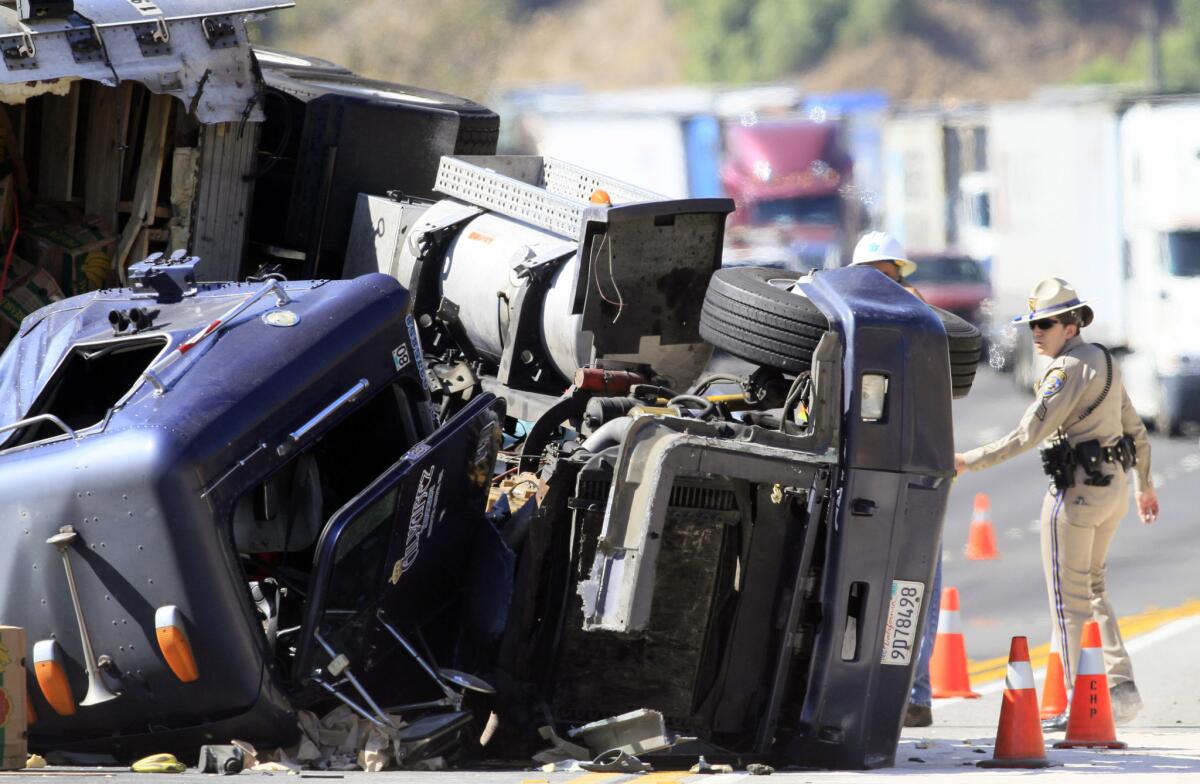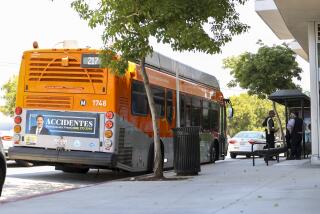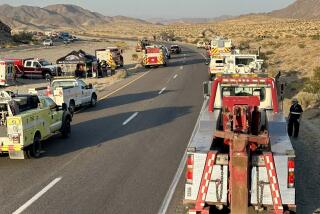Federal money approved for fixes to bottleneck at 57 and 60 freeways

There may be relief in sight for drivers and truckers facing one of Southern California’s worst bottlenecks.
Federal officials Tuesday approved a $10-million grant for a series of fixes to the congested interchange between the 60 Freeway and the 57 Freeway in eastern Los Angeles County.
For two perilous miles in Diamond Bar, the Pomona Freeway and the Orange Freeway combine into one, reducing 17 lanes to 14, while more traffic merges on and off from a local intersection. Cars and trucks frequently veer across up to five lanes to reach the correct exit. Officials say the area has more than 600 accidents a year.
The $10-million grant from the U.S. Department of Transportation will partially fund on- and off-ramps to the eastbound 60, officials said. The first stage of construction is expected to cost about $53 million and will probably start next summer.
“We’re trying to separate the movements, so that you don’t have to cross over so many lanes to go in the direction you want,” said John Ballas, the city engineer for the City of Industry.
The 57 runs north from Orange to the San Gabriel Valley. The 60 links East Los Angeles to Riverside County and carries an estimated 26,000 trucks a day, most of them leaving the Ports of Los Angeles and Long Beach. As port traffic continues to grow, officials say the 60 could see 44,000 trucks a day by 2035.
Rep. Ed Royce (R-Fullerton), whose district includes the bottleneck, told The Times the congestion poses problems for the goods movement industry and causes air pollution and quality of life problems for people who live in nearby cities.
Intersecting freeways are typically built at 90-degree angles. But in the early 1970s, engineers built the 57 alongside the 60 because the curve of the hillside was too steep to accomodate another configuration, Ballas said.
“The worst place to put a local street with ramps on it is in the middle of this whole blender, but this is our reality,” Ballas said.
The total project is expected to cost at least $258 million. City of Industry and Diamond Bar officials hope to eventually build a new interchange that will completely separate local traffic merging from Grand Avenue from the two freeways below.
The project also has funding from other federal sources, the City of Industry and the Los Angeles County Metropolitan Transportation Authority.
Multiple officials from Washington have visited the site, including Transportation Secretary Anthony Foxx and Rep. Bill Shuster (R-Pa.), who chairs the U.S. House Committee on Transportation and Infrastructure.
When Shuster came to tour the site, the event organizers asked him to drive to the event. Then they fudged the start time, giving him an extra hour to arrive.
“Turns out, he needed it,” Royce said, laughing. “That baptism by fire was enough to convince him.”
Drivers frequently complain it takes more than half an hour to drive two miles during rush hour. Traffic on the eastbound 60 frequently backs up to Hacienda Heights, and cars and trucks on the northbound 57 often encounter congestion as far south as Brea.
For more transportation news, follow @laura_nelson on Twitter.
More to Read
Sign up for Essential California
The most important California stories and recommendations in your inbox every morning.
You may occasionally receive promotional content from the Los Angeles Times.











